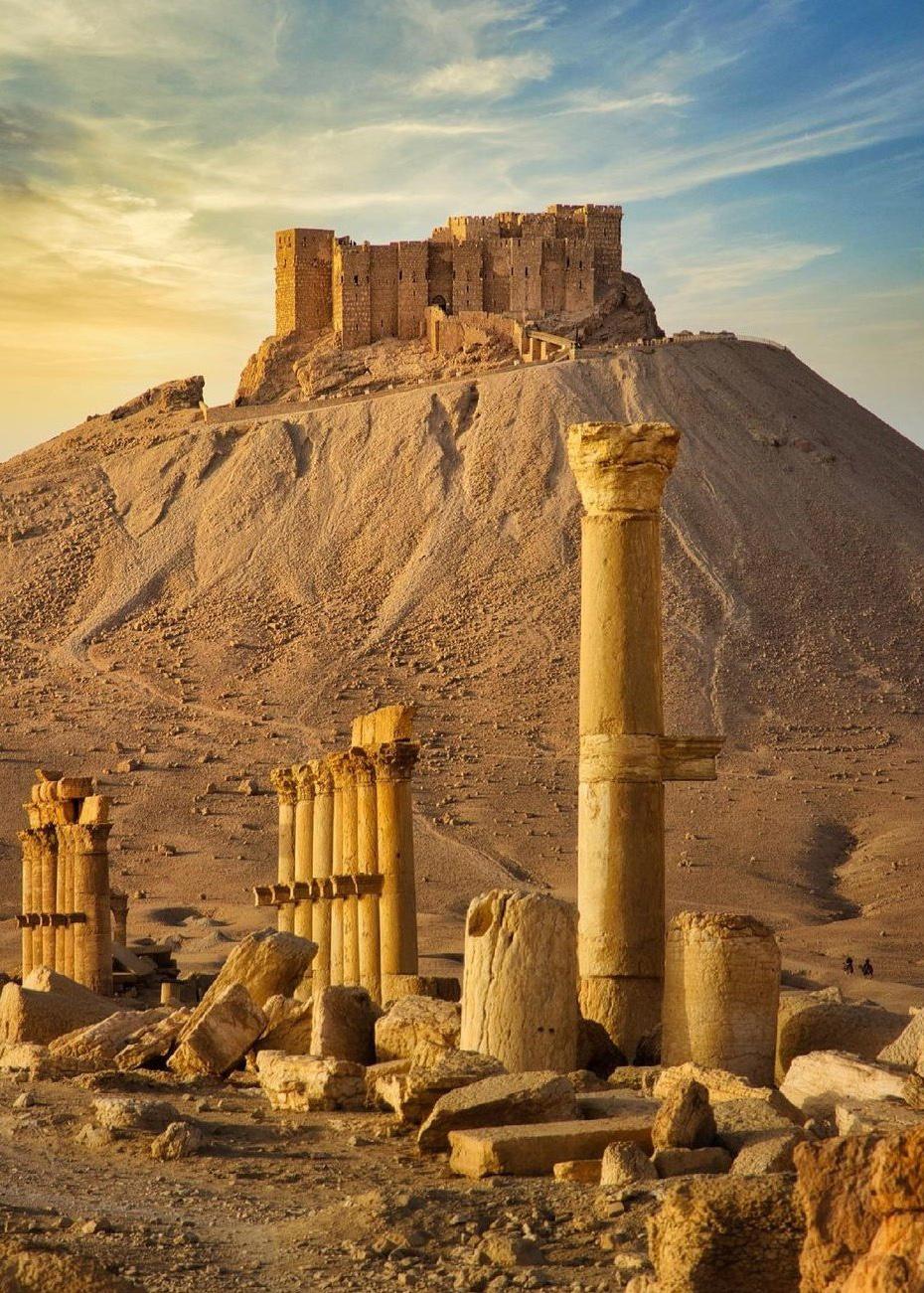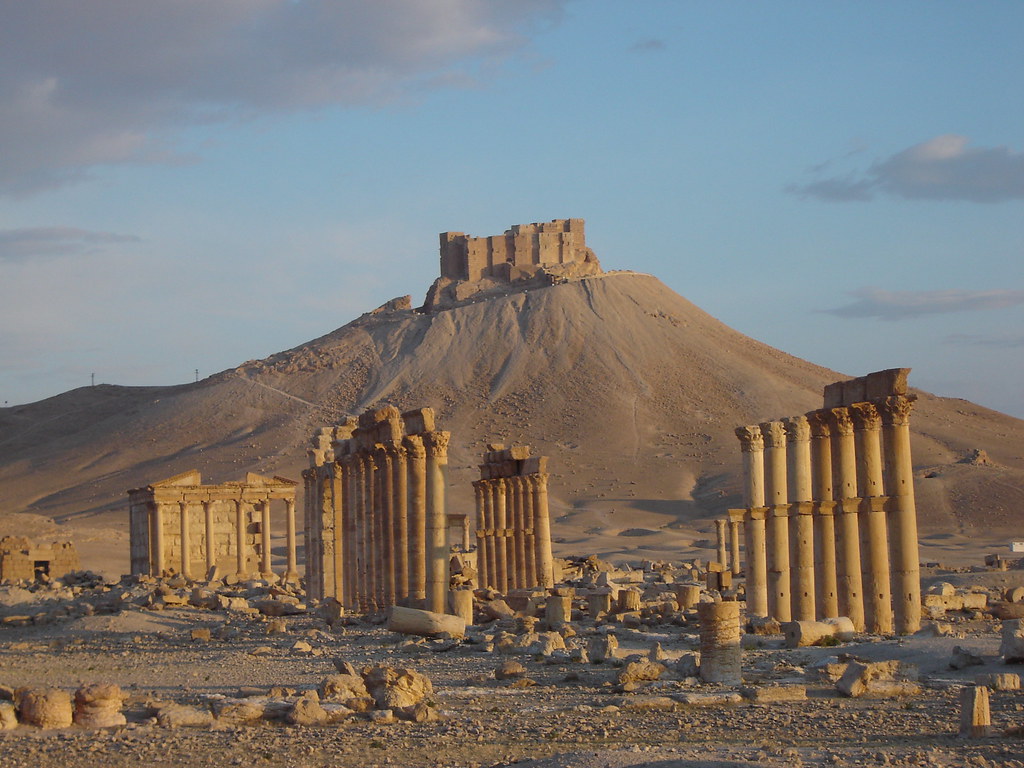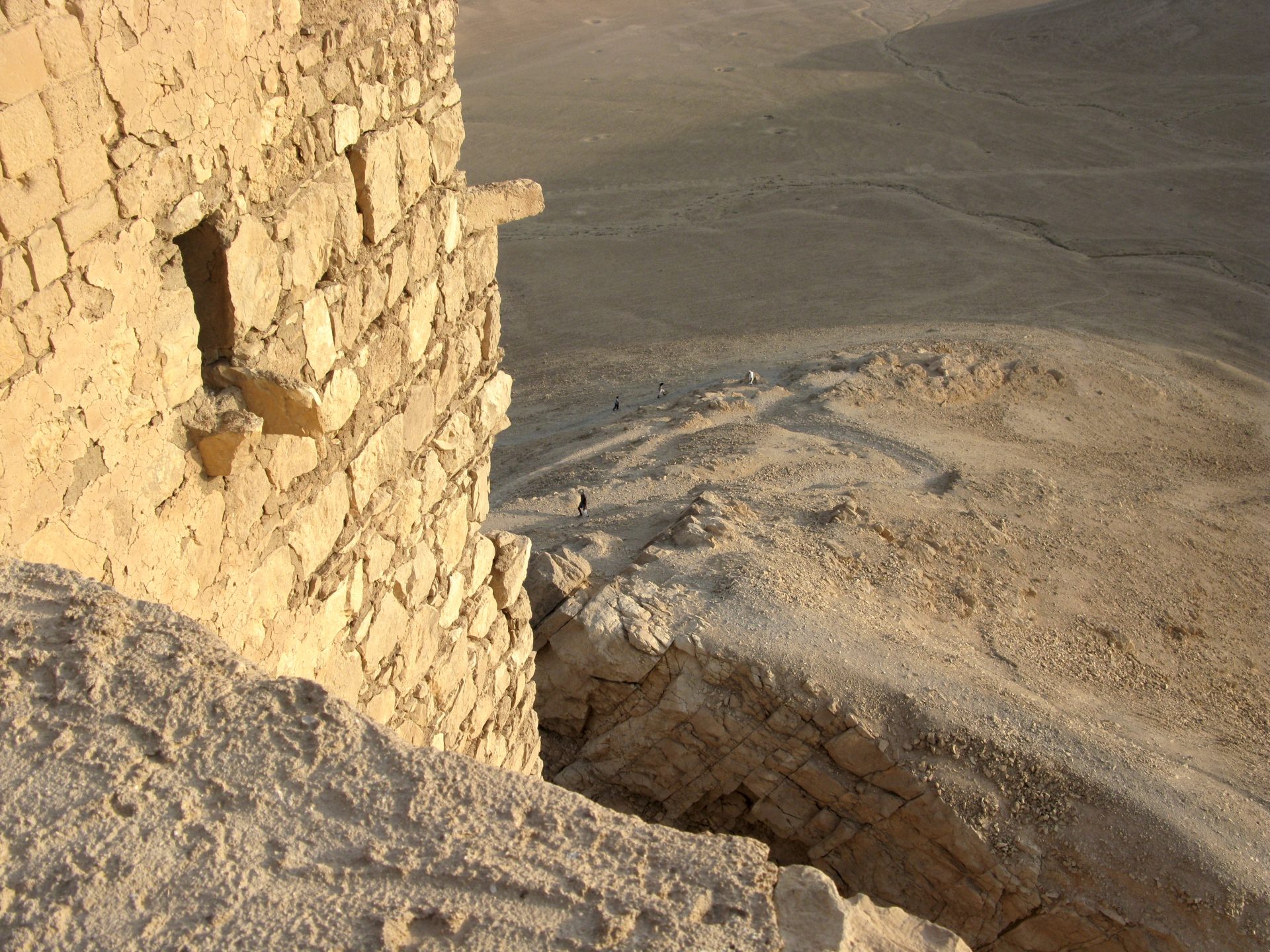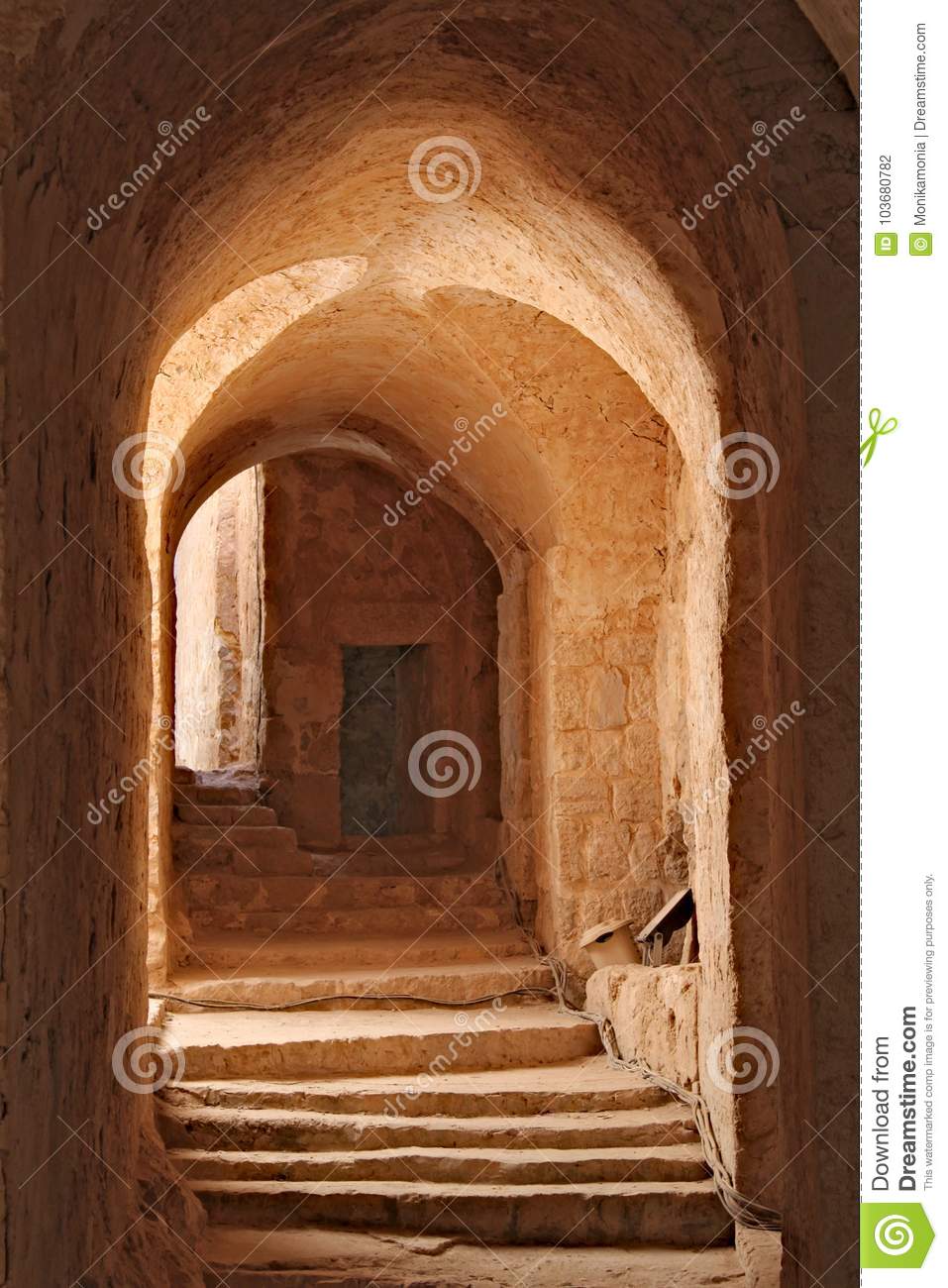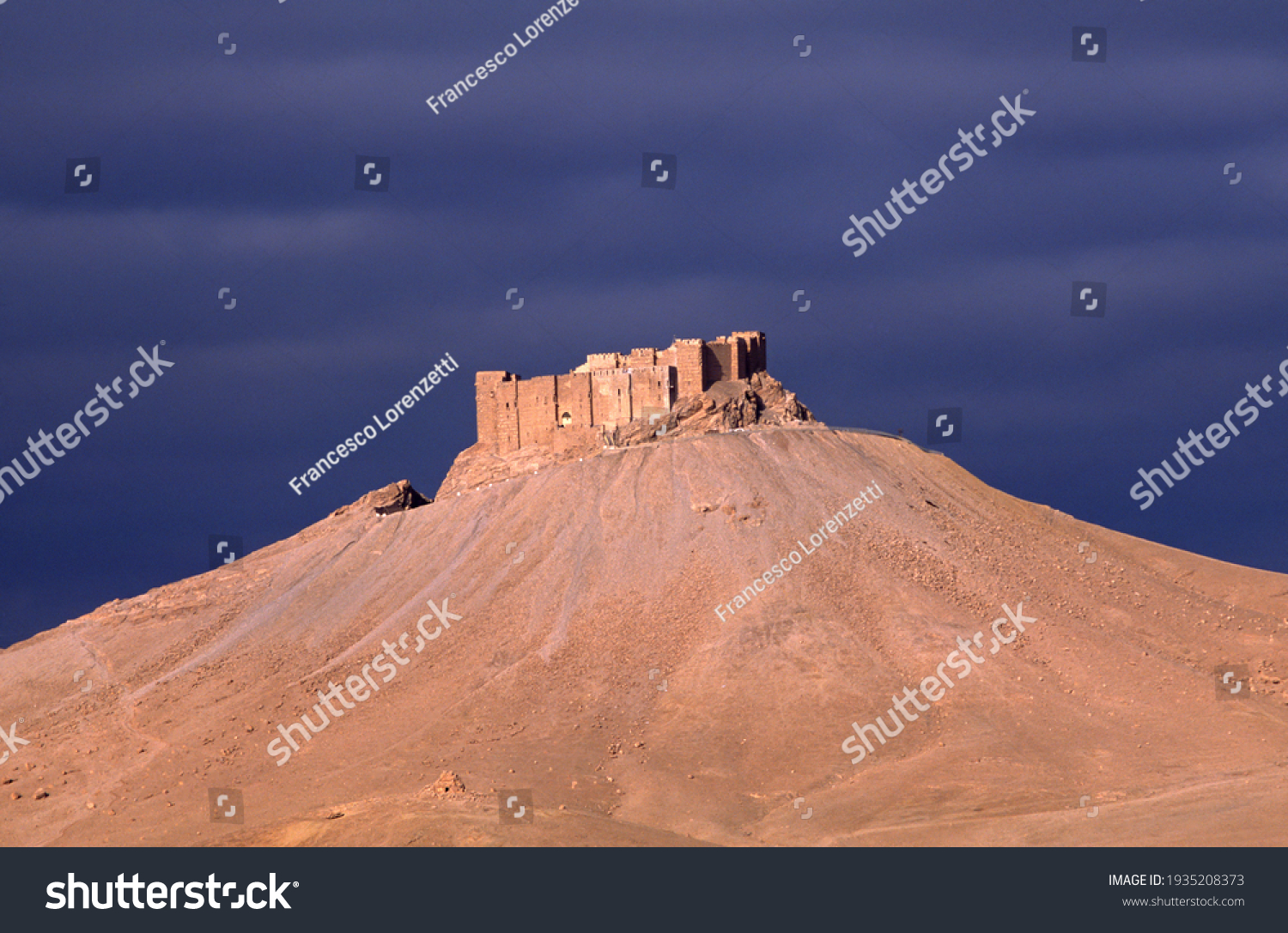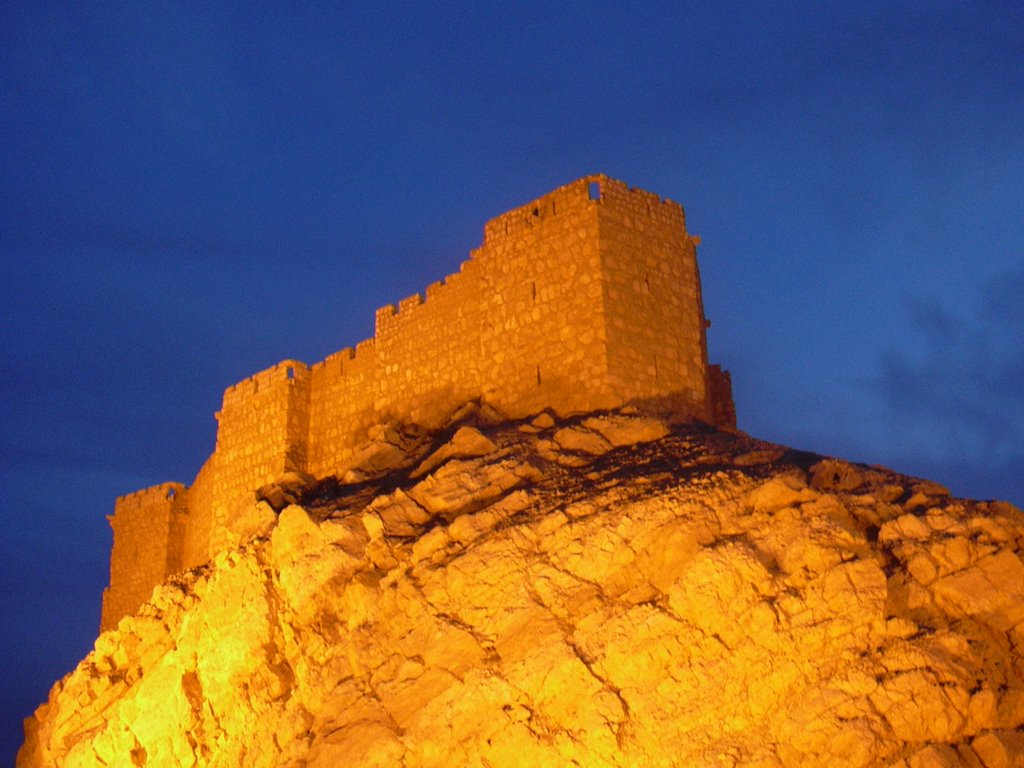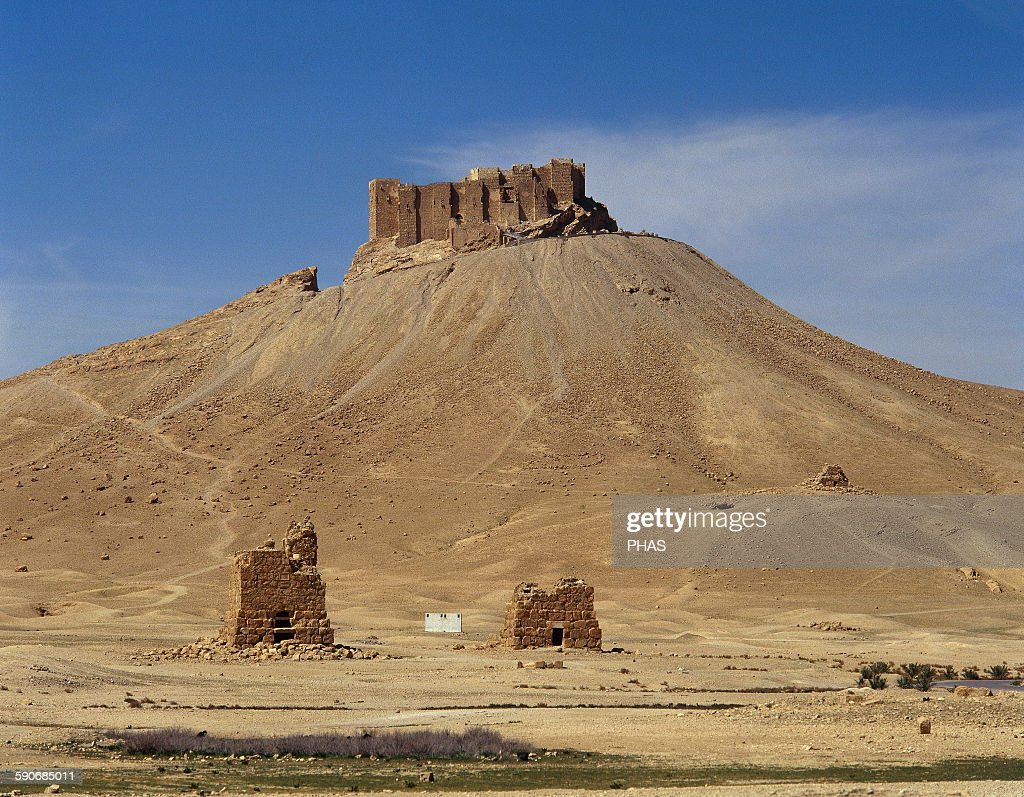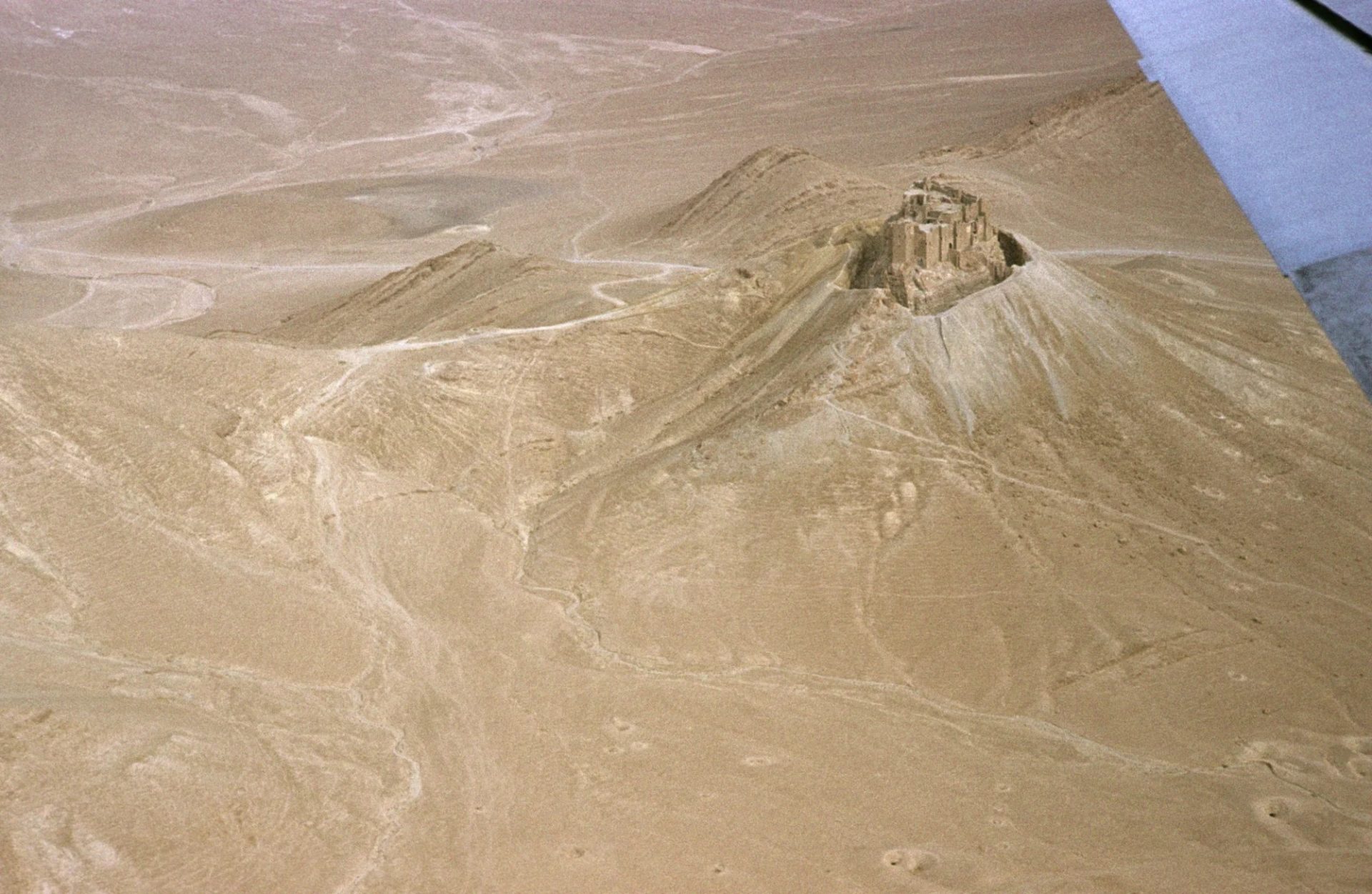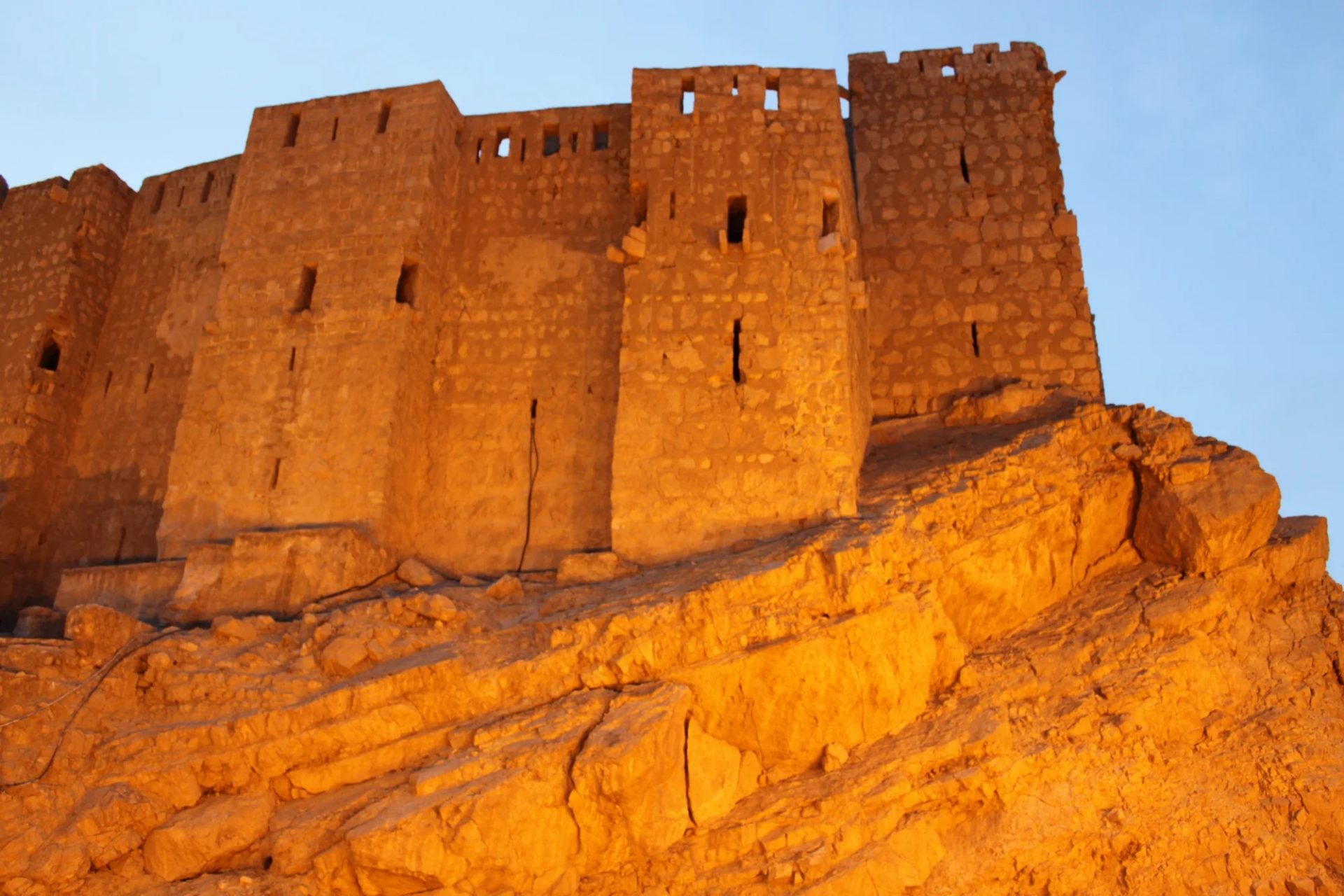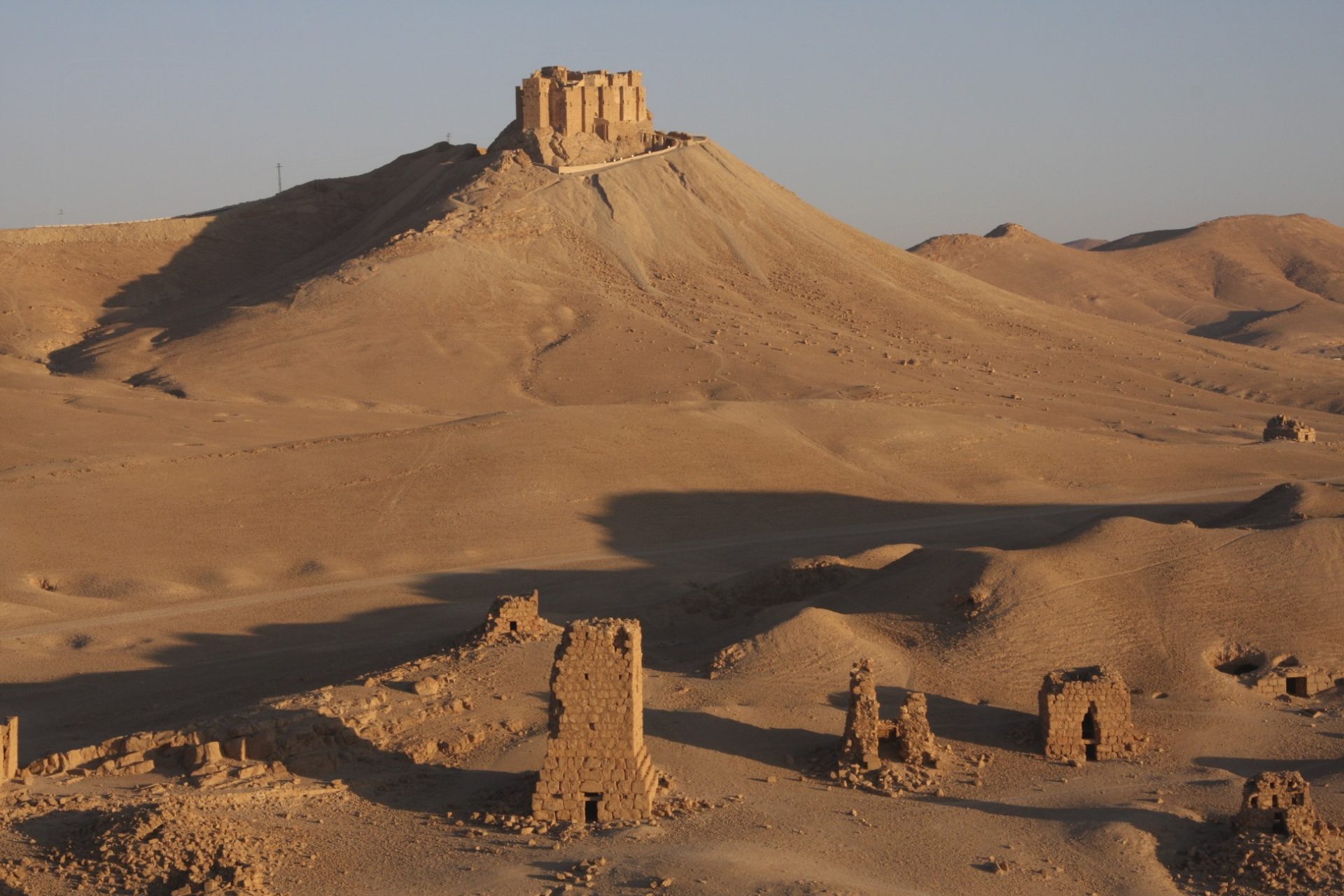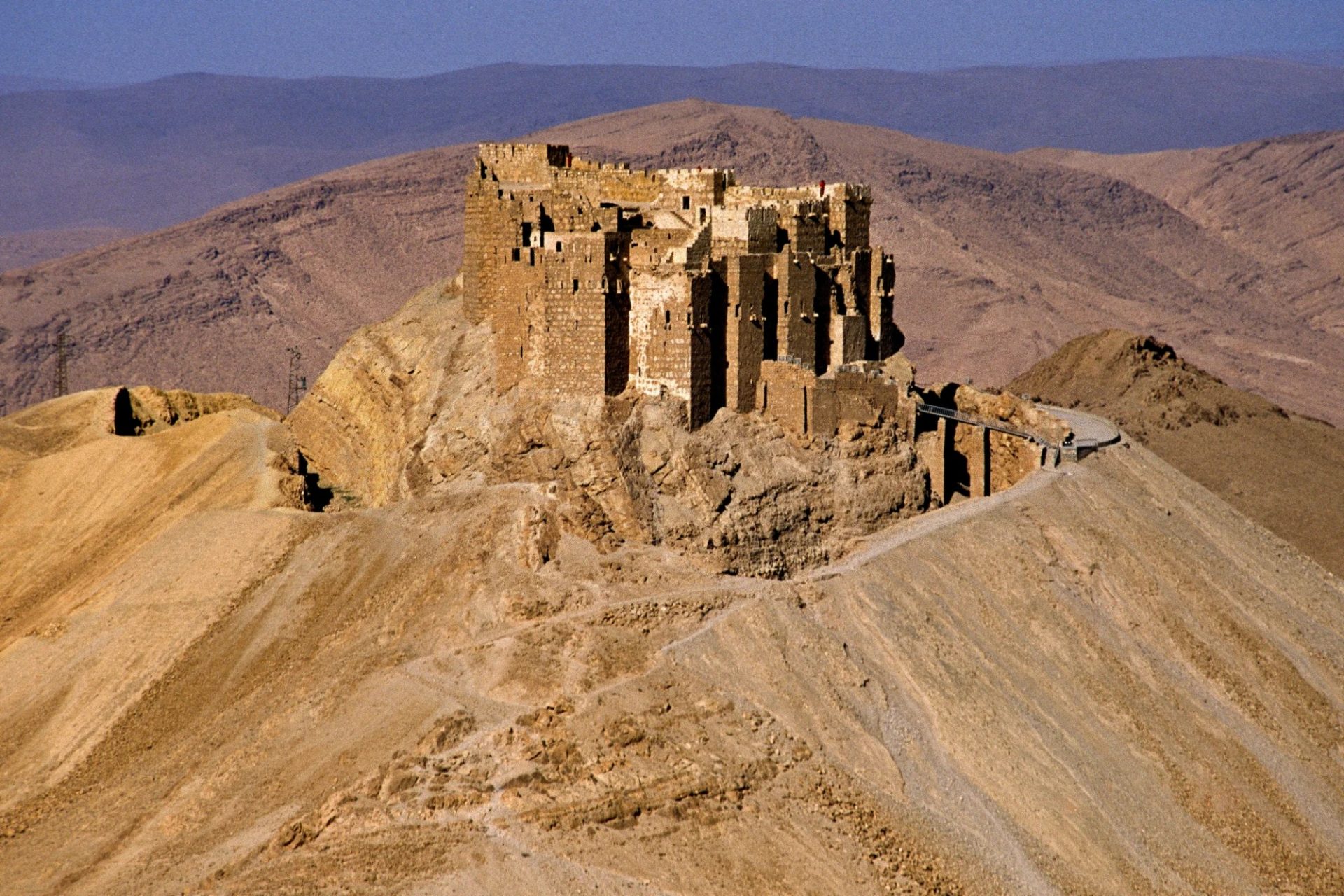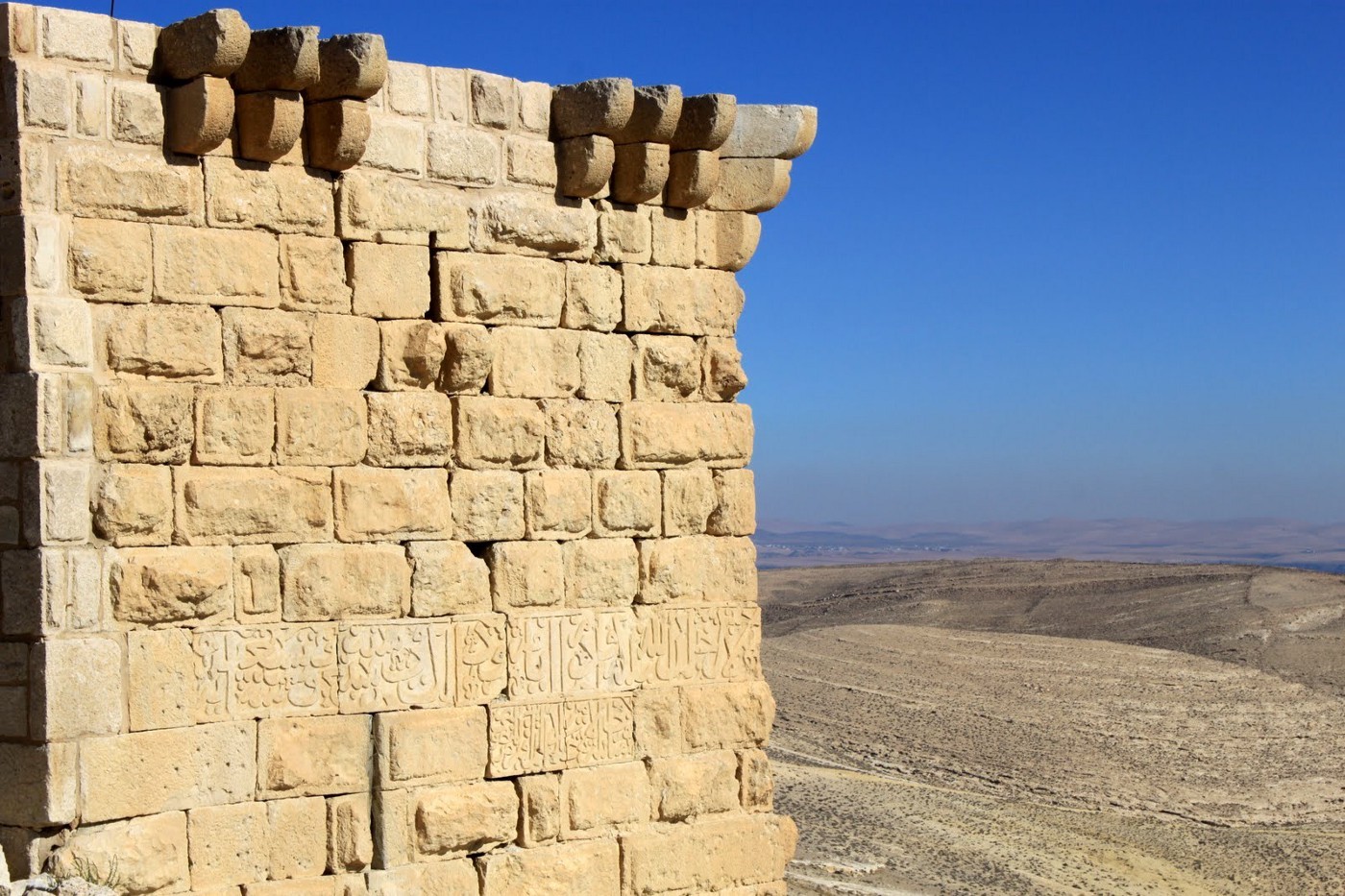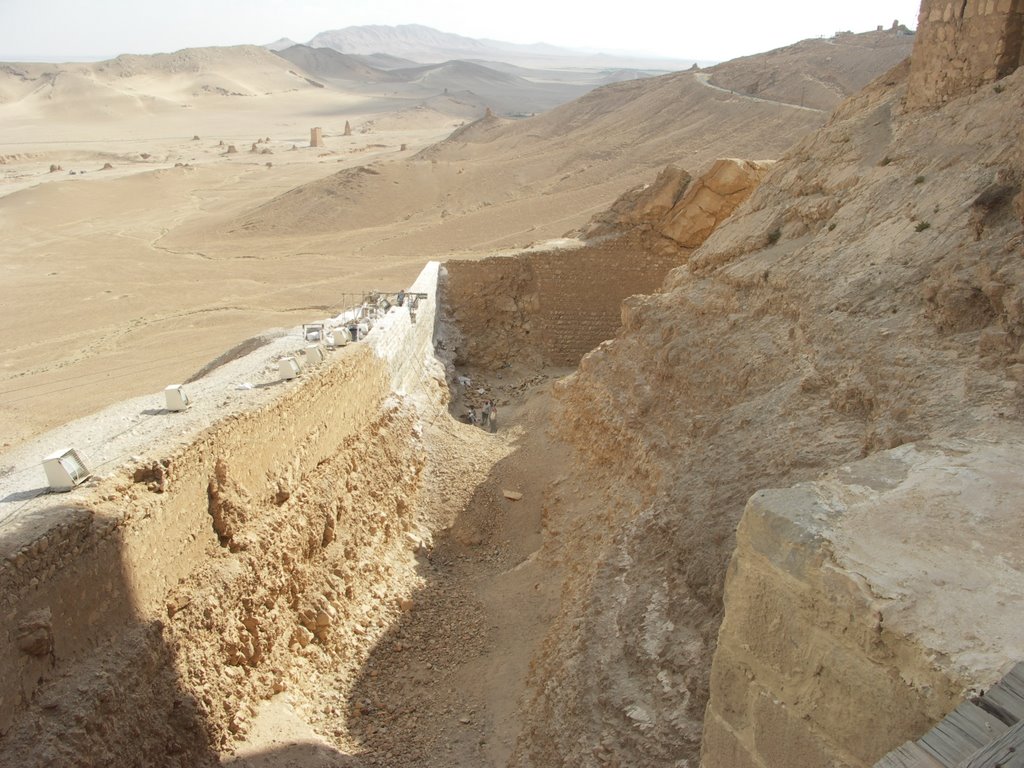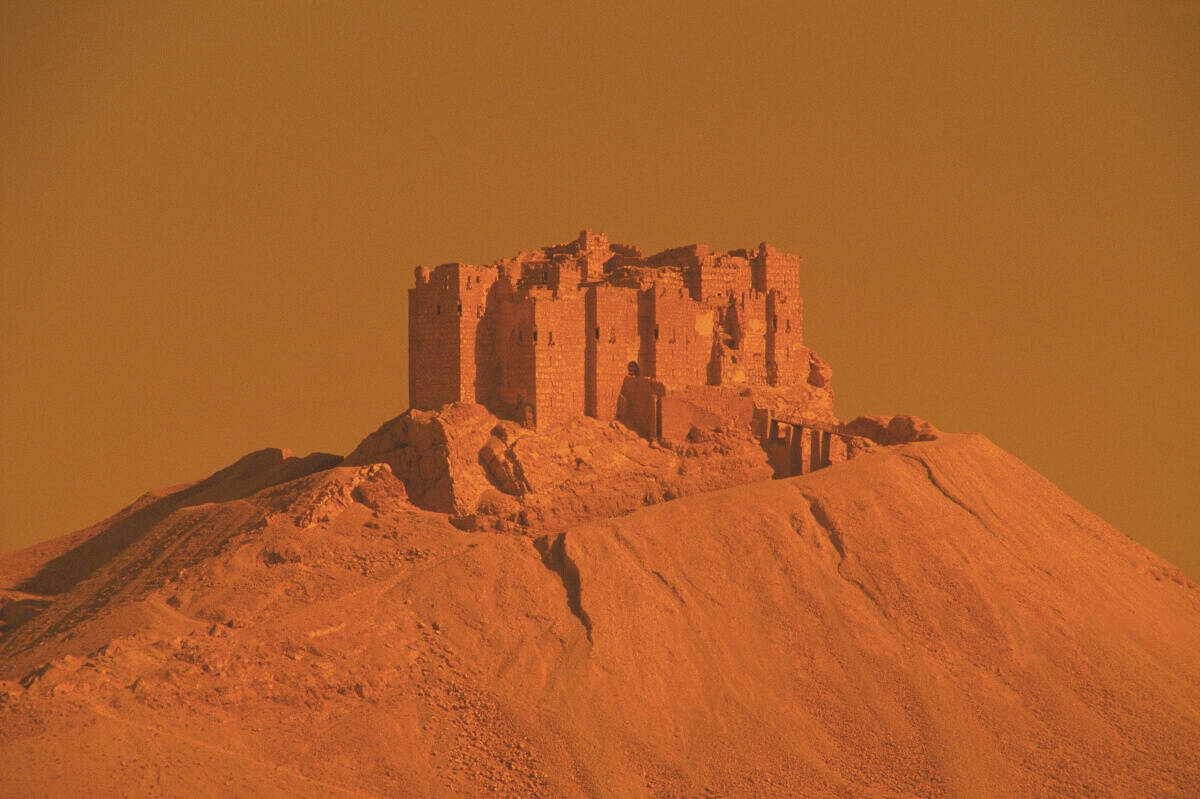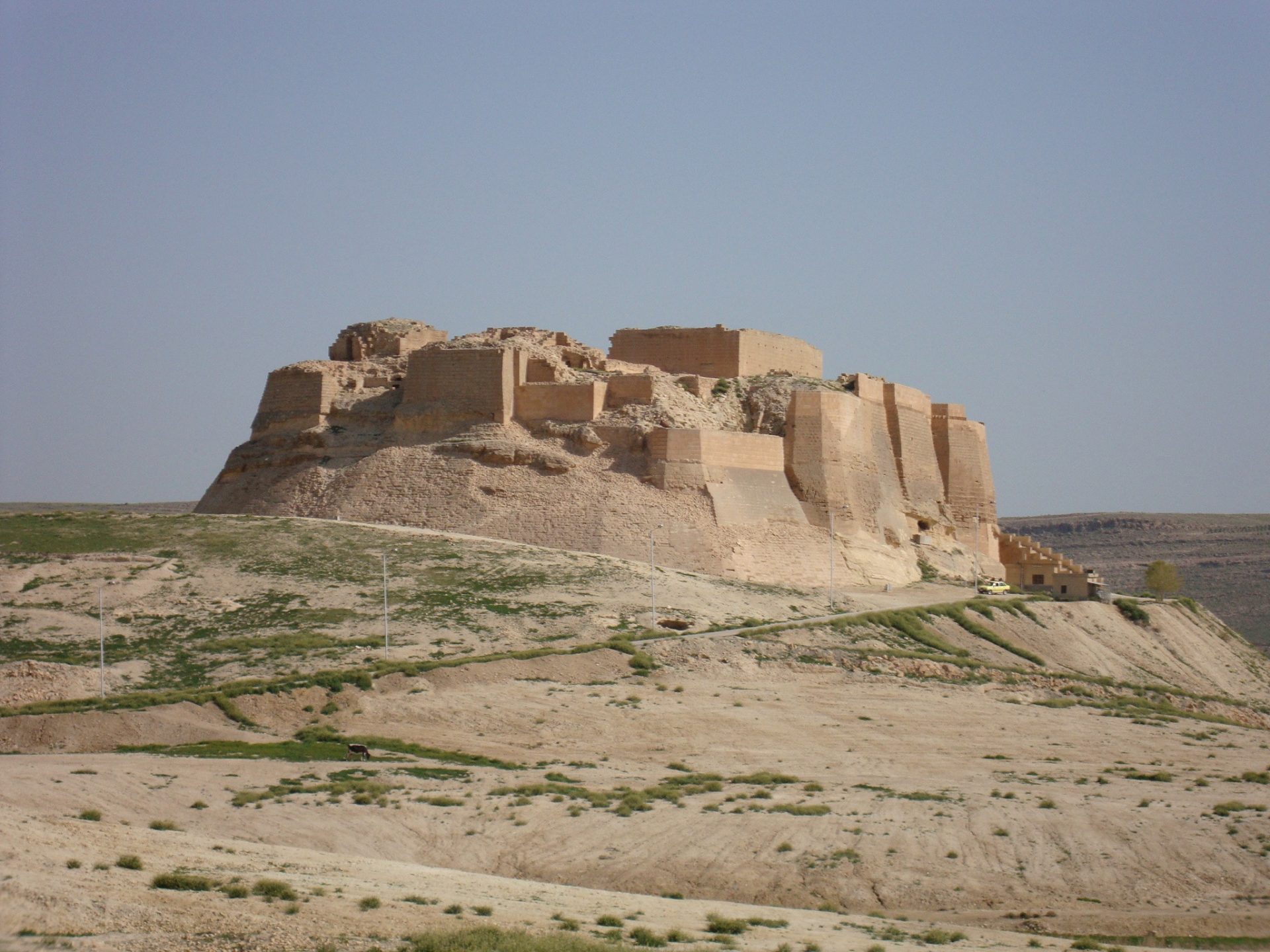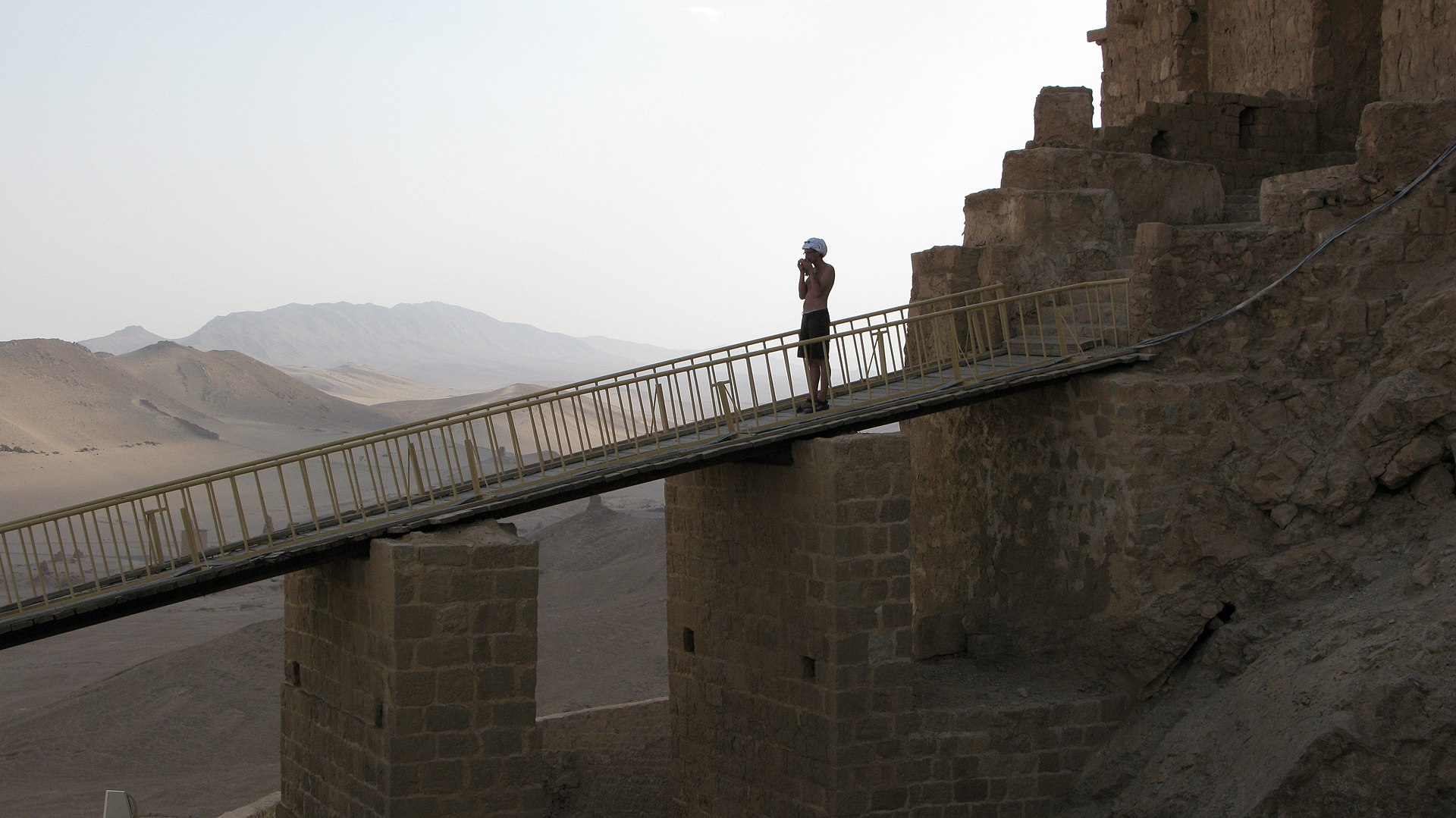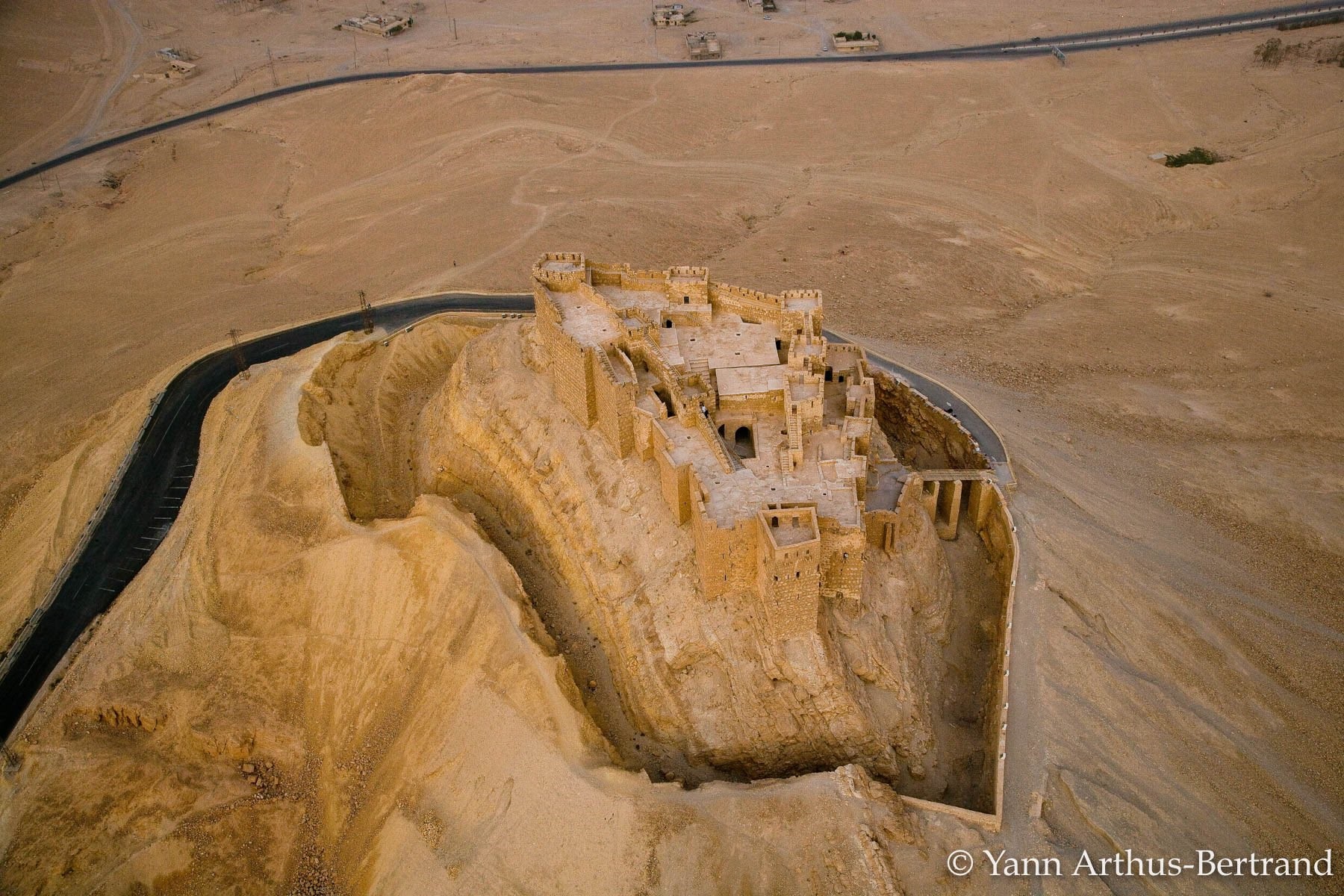
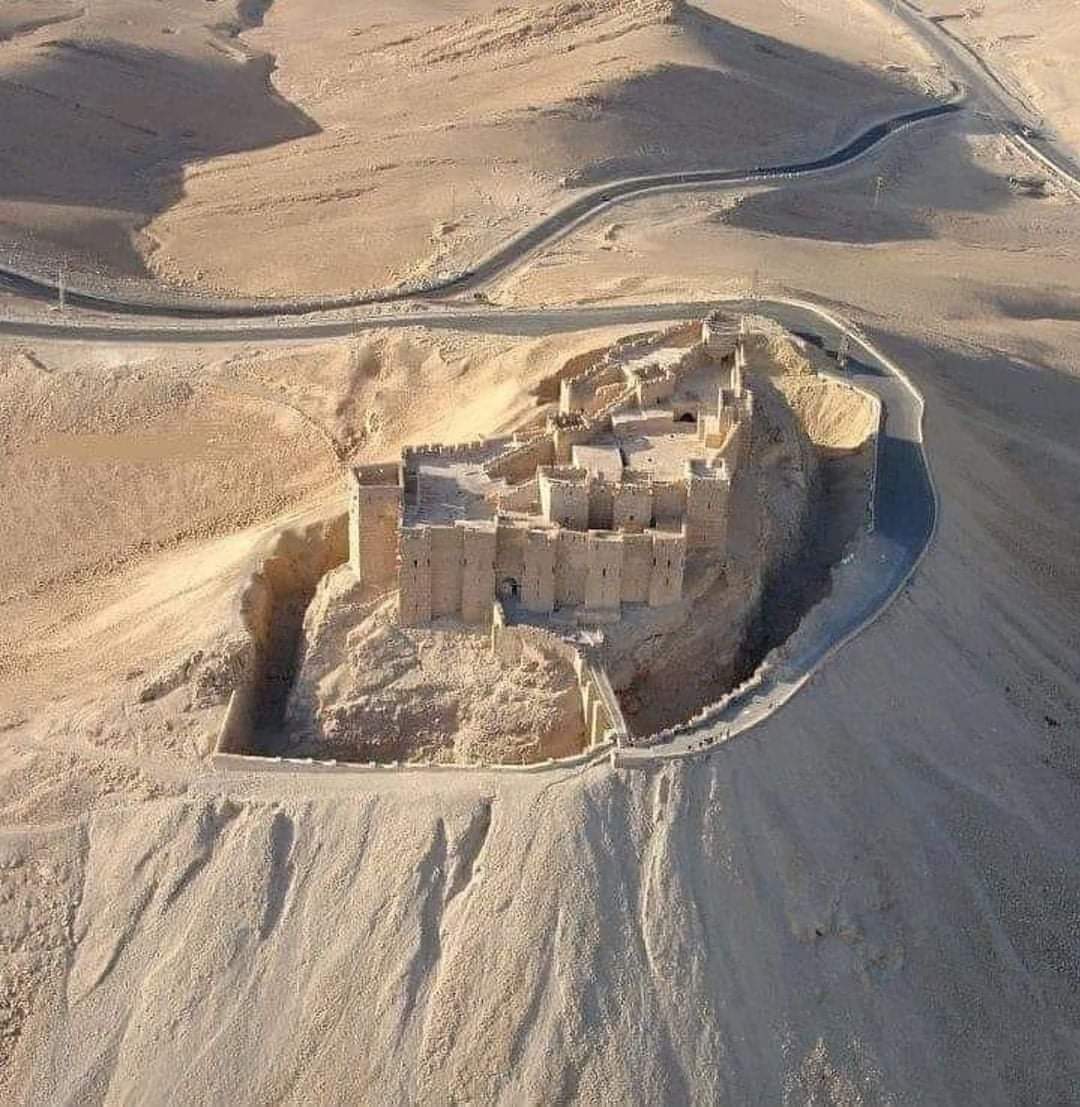
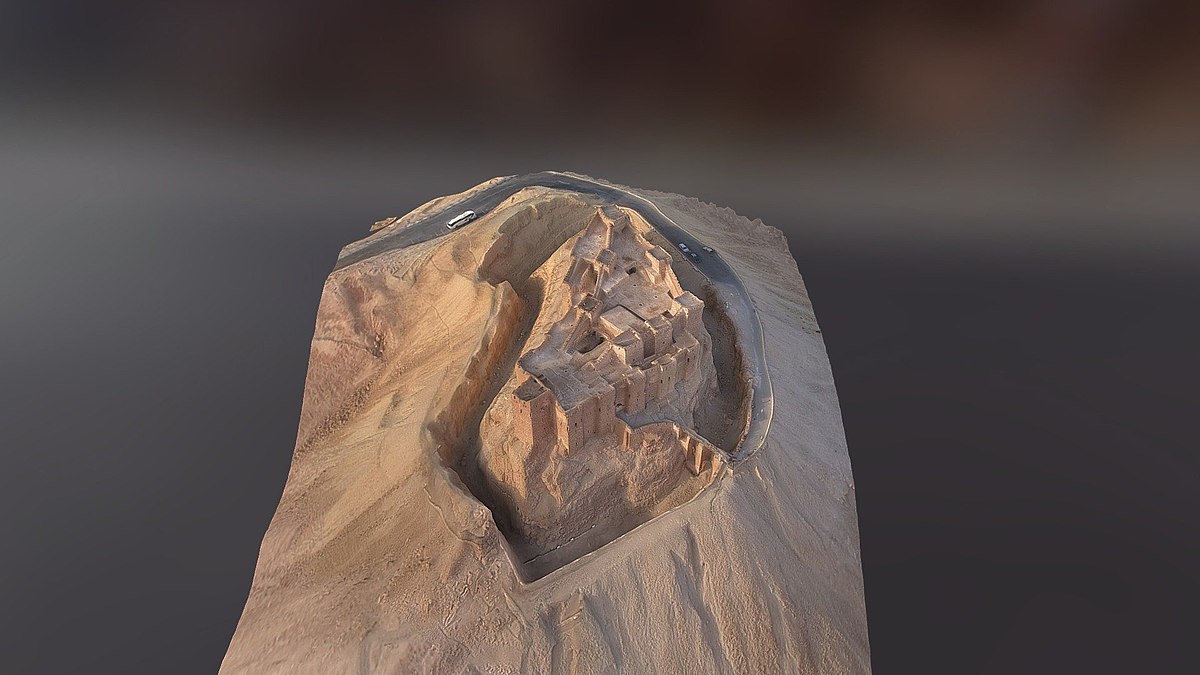
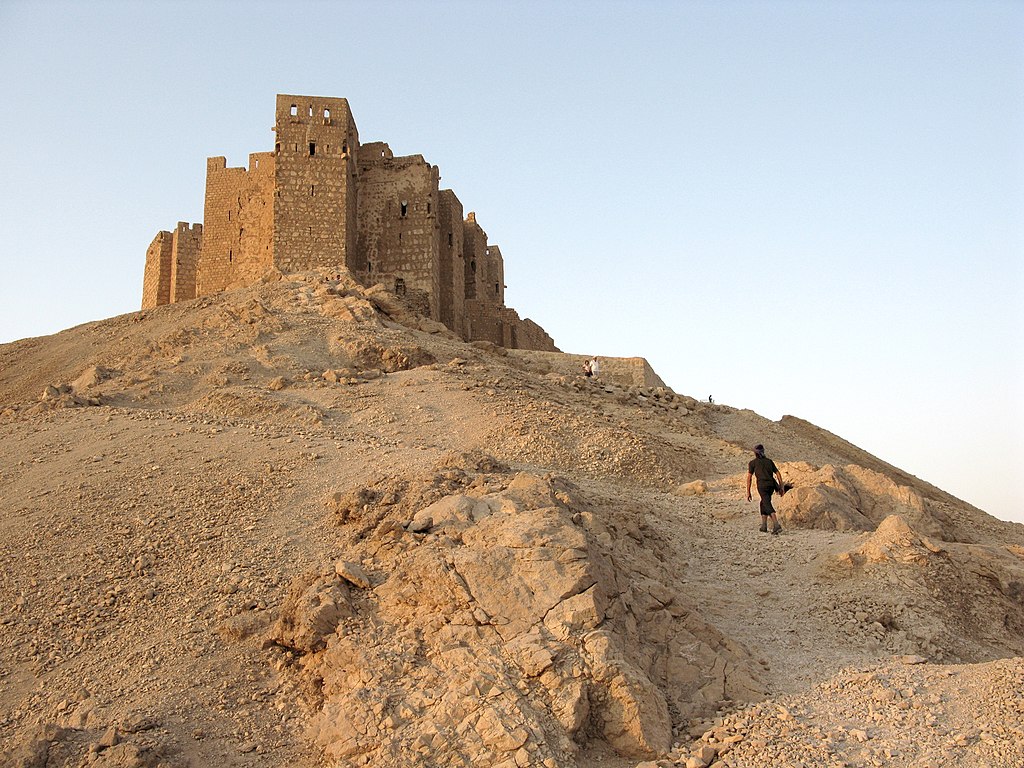
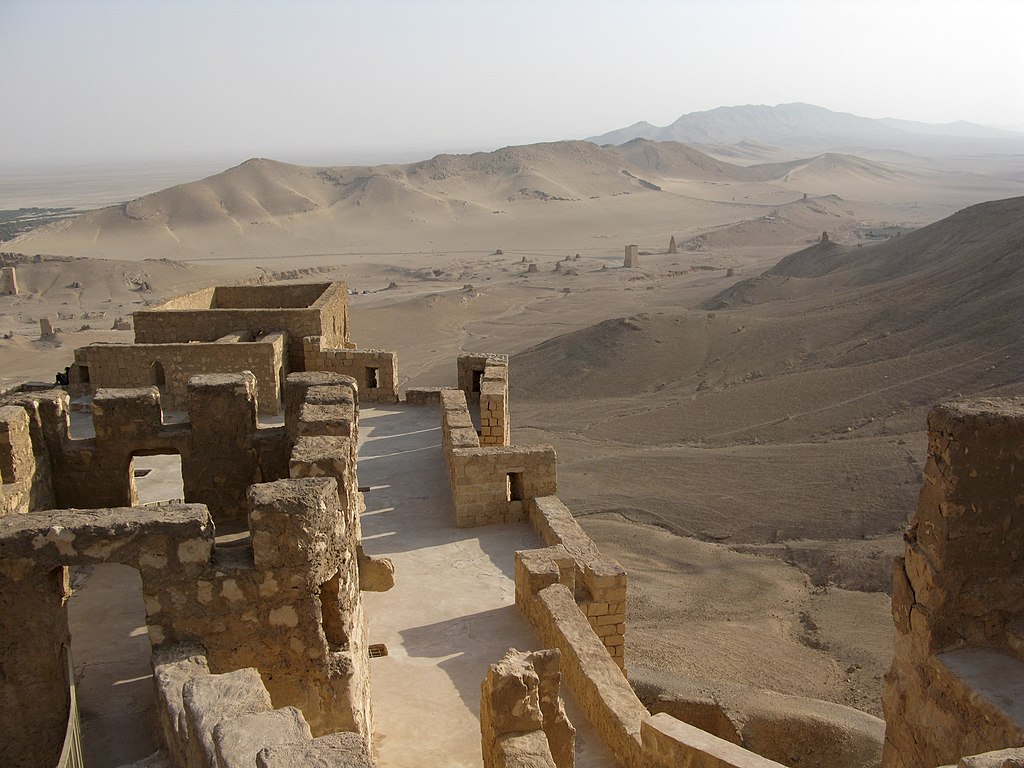
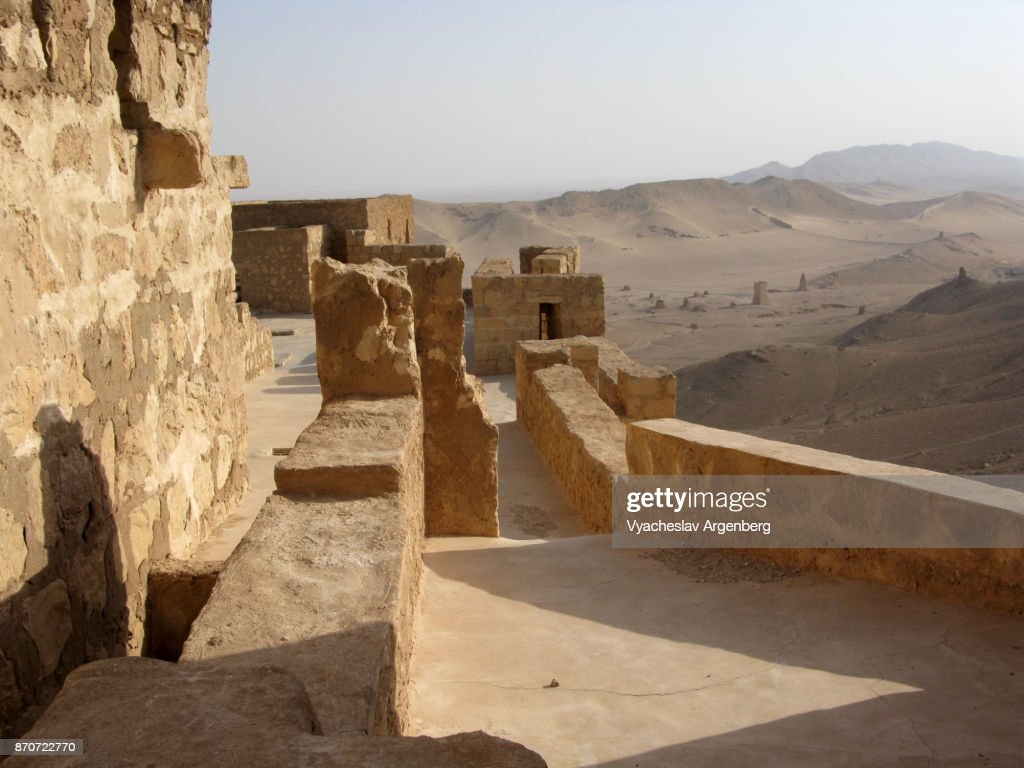
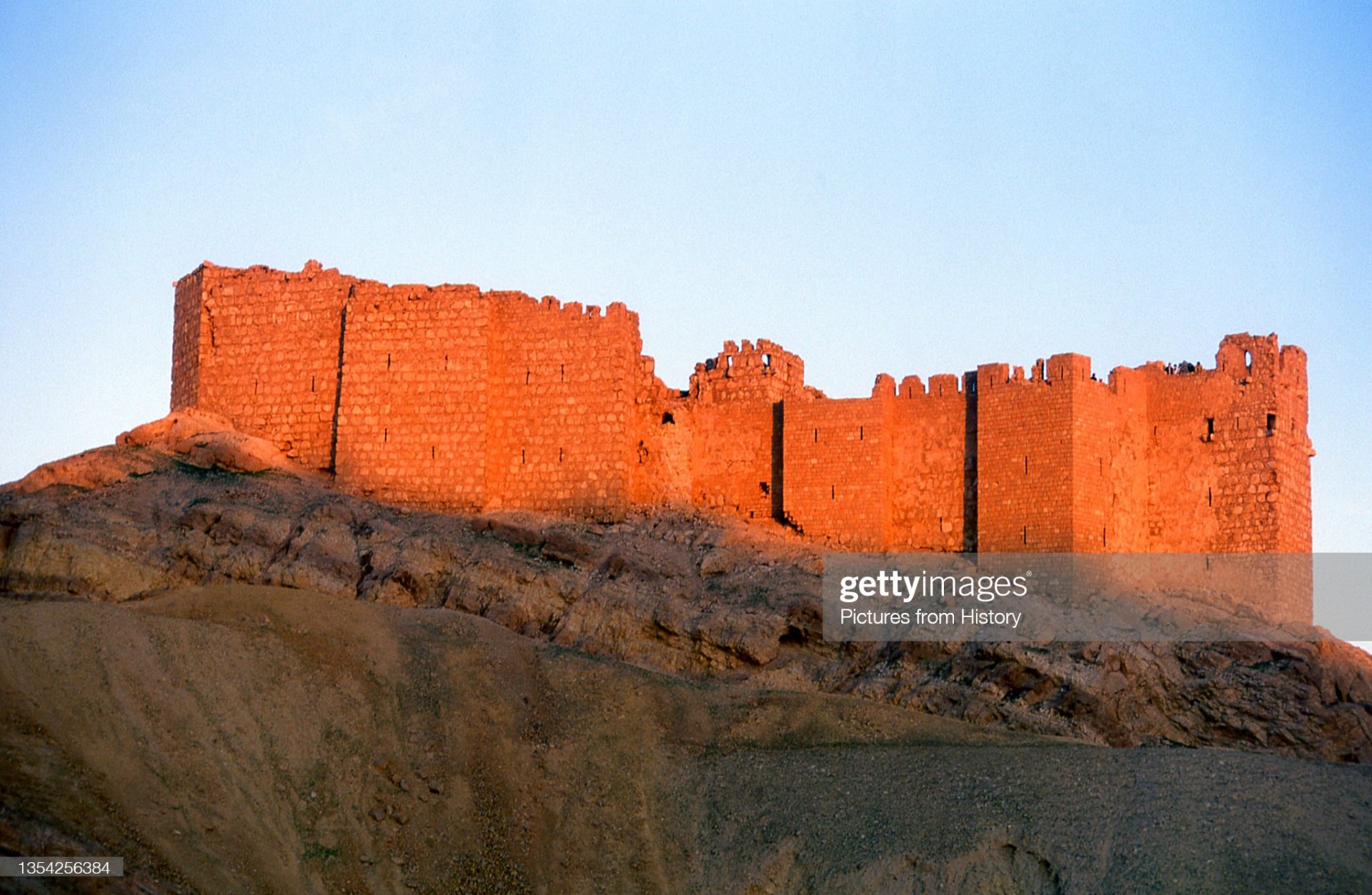
The Arab castle, Qala’at Ibn Maan (also known as Fakhr-al-Din al-Maani), situated on a hill overlooking the ruins was orignally constructed by the Mamluks in the 13th century. Palmyra was an ancient city in Syria. It was an important city in central Syria, located in an oasis 215 km northeast of Damascus and 180 km southwest of the Euphrates at Deir ez-Zor. It had long been a vital caravan city for travellers crossing the Syrian desert and was known as the Bride of the Desert. The earliest documented reference to the city by its Semitic name Tadmor, Tadmur or Tudmur (which means ‘the town that repels’ in Amorite and ‘the indomitable town’ in Aramaic) is recorded in Babylonian tablets found in Mari. (Photo by: Pictures From History/Universal Images Group via Getty Images)

UNSPECIFIED – MAY 23: Syria – Palmyra. Ancient Palmyra. UNESCO World Heritage List, 1980. Arab fortification Qal’at ibn Ma’an, 16th-17th century (Photo by DEA / C. SAPPA/De Agostini via Getty Images)
